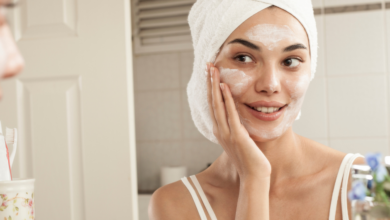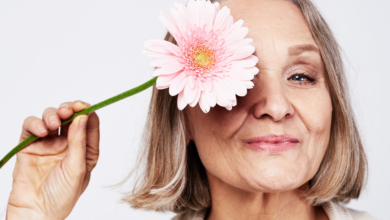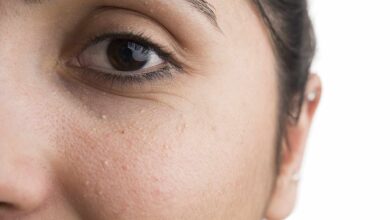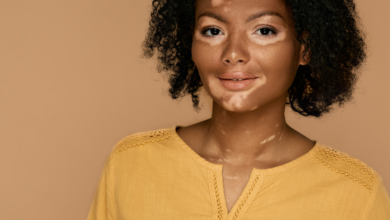
Are you tired of constantly battling breakouts and dealing with acne? Look no further than “Battling Breakouts: Acne Solutions Curated by Stylish.ae Experts.” This innovative product is designed to provide you with expertly curated solutions to combat acne and achieve clear, radiant skin. With the help of stylish.ae’s team of skincare experts, you can finally say goodbye to frustrating breakouts and hello to a confident, blemish-free complexion. Trust in their expertise and get ready to experience the transformative power of “Battling Breakouts: Acne Solutions Curated by Stylish.ae Experts.”
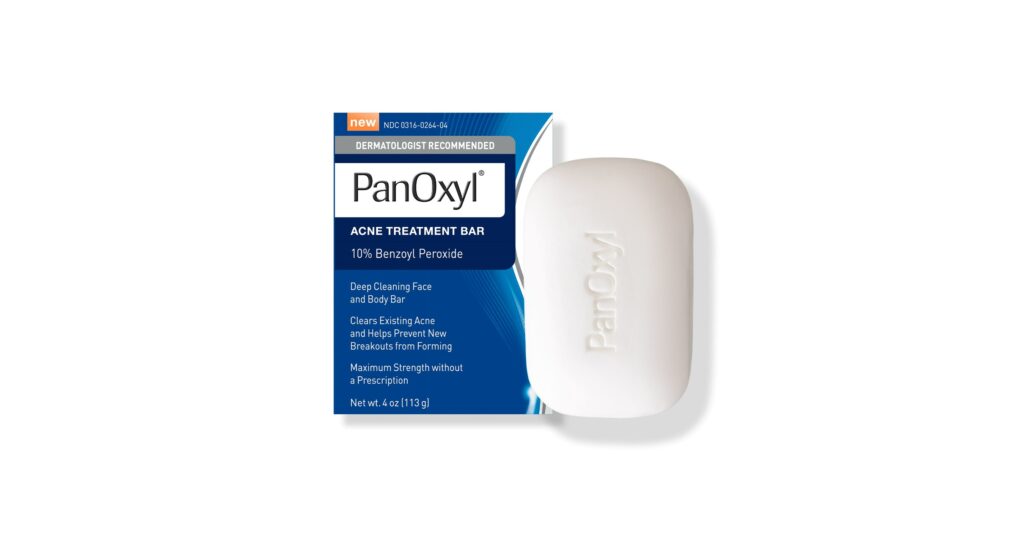
Understanding Acne
What is acne?
Acne is a common skin condition that affects many people, especially during their teenage years. It occurs when the hair follicles become clogged with oil and dead skin cells. This leads to the formation of pimples, blackheads, whiteheads, and even cysts. Acne can appear on the face, chest, back, and other areas of the body.
Types of acne
Acne can present itself in different forms, each with its own characteristics and severity. The most common types of acne include:
- Whiteheads: Small, flesh-colored or white bumps that occur when hair follicles are clogged with oil and dead skin cells.
- Blackheads: Similar to whiteheads, but they have a dark appearance due to oxidation of the clogged pore.
- Papules: Red, inflamed bumps that are often tender to touch.
- Pustules: Similar to papules, but pus-filled and more visible.
- Nodules: Large, solid bumps that are deep within the skin and can be painful.
- Cysts: Severe acne lesions that are larger than nodules and filled with pus. They can be extremely painful and may cause scarring.
Causes of acne
Acne is primarily caused by a combination of factors, including:
- Excessive sebum production: The sebaceous glands produce an excess of sebum, which can clog pores and lead to acne.
- Dead skin cells: When skin cells build up and mix with sebum, they can block hair follicles, resulting in acne.
- Bacteria: The presence of Propionibacterium acnes, a bacteria that naturally resides on the skin, can contribute to acne formation.
- Hormonal changes: Fluctuations in hormone levels, particularly during adolescence, can stimulate the sebaceous glands and increase sebum production.
- Diet and lifestyle: Consuming a high-glycemic diet, dairy products, or foods with a high sugar content can exacerbate acne. Stress, lack of sleep, and certain medications may also contribute to breakouts.
Preventing Acne
Maintaining a proper skincare routine
One of the most important steps in preventing acne is establishing a regular skincare routine. This involves cleansing the skin twice a day using a gentle cleanser suitable for your skin type. Removing dirt, oil, and makeup helps to keep the pores clean and prevents acne formation. It is essential not to over-cleanse or scrub the skin harshly, as this can lead to irritation and worsen acne.
After cleansing, it is crucial to apply a suitable moisturizer to hydrate the skin without clogging the pores. Look for non-comedogenic or oil-free moisturizers to ensure they won’t contribute to breakouts. Additionally, incorporating exfoliation into your routine can help remove dead skin cells and prevent clogged pores. However, be mindful not to over-exfoliate, as it can cause skin irritation.
Diet and lifestyle choices
While there is no specific “acne diet,” making certain dietary changes can improve the overall health of your skin. Include plenty of fresh fruits, vegetables, whole grains, and lean proteins in your meals. These foods provide essential nutrients and antioxidants that support healthy skin. On the other hand, it’s advisable to limit the consumption of high-glycemic foods, such as sugary snacks and processed carbohydrates, as they can potentially worsen acne.
Lifestyle factors such as stress management and quality sleep also play a significant role in preventing acne. Stress can trigger hormonal imbalances and increase sebum production, leading to breakouts. Engaging in relaxation techniques, regular exercise, and getting enough sleep can help mitigate the effects of stress on your skin.
Avoiding triggers and irritants
Identifying and avoiding triggers and irritants in your everyday life can help prevent acne breakouts. Some common triggers include:
- Cosmetics: Certain makeup products can clog the pores and worsen acne. Opt for non-comedogenic and oil-free products that won’t clog the pores.
- Sunscreen: While sunscreen is essential for protecting your skin from harmful UV rays, some formulations can be comedogenic. Choose oil-free or non-comedogenic sunscreens to avoid acne flare-ups.
- Fabric and clothing: Tight clothing or fabrics that don’t allow your skin to breathe can contribute to acne. Opt for breathable fabrics like cotton and avoid tight straps or headbands that can trap sweat and oil against your skin.
- Hair products: Hair styling products that contain heavy oils or silicones can migrate onto the skin and clog pores. Be mindful of the products you use and avoid applying them directly to the scalp or hairline.
Treating Acne

Over-the-counter treatments
Over-the-counter acne treatments are readily available and can be effective in treating mild to moderate acne. These treatments usually contain ingredients like benzoyl peroxide, salicylic acid, or sulfur, which help reduce inflammation, unclog pores, and kill bacteria. It is important to follow the instructions provided and gradually incorporate these products into your skincare routine to avoid skin irritation.
Prescription medications
In cases of more severe or persistent acne, a dermatologist may prescribe medications to address the underlying causes of acne. These prescription medications may include:
- Topical retinoids: Derived from Vitamin A, topical retinoids help to unclog pores, reduce inflammation, and promote cell turnover. They may cause skin dryness or sensitivity, so it’s important to use them as directed.
- Antibiotics: Oral antibiotics may be prescribed to reduce bacteria and inflammation in the skin. They should be used for a limited time to avoid antibiotic resistance.
- Hormonal treatments: For acne related to hormonal imbalances, certain hormonal medications like oral contraceptives or anti-androgen drugs may be recommended.
Alternative remedies
In addition to conventional treatments, some individuals may opt for alternative remedies to treat their acne. While research on their effectiveness is limited, some of these remedies include:
- Tea tree oil: Known for its antibacterial and anti-inflammatory properties, tea tree oil can be applied topically to reduce acne lesions. However, it should be used with caution and in diluted form to avoid skin irritation.
- Aloe vera: Aloe vera gel has soothing and anti-inflammatory properties that may help reduce acne inflammation. Apply a thin layer of pure aloe vera gel to acne-prone areas and leave it on for 15-20 minutes before rinsing off.
- Honey and cinnamon masks: A combination of honey and cinnamon may have antimicrobial properties and can be used as a natural face mask to reduce acne. Mix equal parts honey and cinnamon powder, apply it to the face, and leave it on for 10-15 minutes before rinsing.
Skincare Tips for Acne-Prone Skin
Cleansing and exfoliating
When dealing with acne-prone skin, gentle cleansing is key. Use a mild cleanser that is specifically formulated for acne-prone skin, and avoid harsh scrubbing or using rough face towels. Instead, use your fingertips to gently massage the cleanser onto your skin in circular motions, then rinse thoroughly with lukewarm water.
Exfoliation can also be beneficial for removing dead skin cells and unclogging pores. It is important to choose a gentle exfoliant that won’t irritate or inflame the skin. Avoid products with large, rough particles and opt for chemical exfoliants containing ingredients like salicylic acid or glycolic acid.
Moisturizing and hydrating
Contrary to popular belief, moisturizing is essential even for acne-prone skin. Look for lightweight, non-comedogenic moisturizers that won’t clog pores or exacerbate breakouts. Moisturizing helps maintain the skin’s natural moisture barrier, preventing it from becoming dry and potentially producing more oil.
In addition to moisturizing, hydrating the skin is important. This can be achieved by using facial mists or hydrating serums containing ingredients like hyaluronic acid. These products help to replenish and lock in moisture, giving your skin a healthy and plump appearance.
Choosing the right products
When it comes to skincare products for acne-prone skin, it is crucial to be selective. Look for products that are labeled as non-comedogenic, oil-free, and suitable for your skin type. Ingredients like benzoyl peroxide, salicylic acid, or sulfur can be beneficial in treating and preventing acne.
Avoid using multiple products with similar active ingredients, as this may lead to skin irritation or dryness. Start with a simple routine and gradually introduce new products to allow your skin to adjust. If possible, consult a dermatologist or skincare professional for personalized recommendations based on your specific skin concerns.
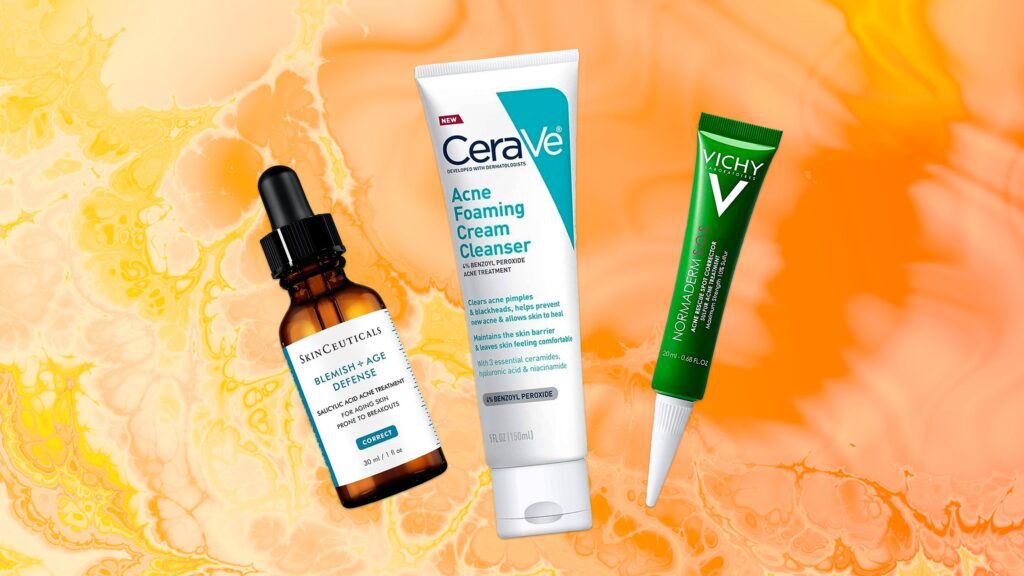
Makeup Tips for Acne-Prone Skin
Choosing non-comedogenic products
When it comes to makeup for acne-prone skin, it is important to choose non-comedogenic products that won’t clog pores. Look for foundations, concealers, and powders that are oil-free and specifically formulated for acne-prone or sensitive skin. These products are less likely to contribute to breakouts or worsen existing acne.
Using the right tools and techniques
Applying makeup with clean brushes and sponges is crucial for preventing the spread of bacteria and further aggravating acne. Regularly clean your brushes and sponges to ensure they are free from dirt, oil, and bacteria. Also, avoid using your fingers or unclean tools to apply makeup, as this can introduce additional bacteria to the skin.
When it comes to application techniques, avoid harsh rubbing or excessive pressure on the skin. Instead, use gentle dabbing or stippling motions to blend the makeup seamlessly into the skin. This minimizes the risk of irritating or inflaming acne-prone skin.
Opting for light, breathable formulas
Heavy or occlusive makeup formulas can trap oil and sweat on the skin, potentially clogging the pores and leading to breakouts. Instead, opt for lightweight and breathable formulas that allow the skin to breathe. Tinted moisturizers, mineral powders, or water-based foundations are good options for acne-prone skin.
Avoid using excessively matte or high-coverage products, as they can emphasize acne texture and potentially worsen the appearance of blemishes. Opt for more natural, sheer coverage that allows your skin to shine through while still providing some coverage for discoloration or redness.
Professional Treatments for Acne
Dermatological procedures
For severe acne that doesn’t respond to conventional treatments, dermatological procedures may be recommended. These procedures are usually performed by a dermatologist and aim to target the underlying causes of acne. Some common dermatological procedures for acne include:
- Extractions: Manual extraction of comedones performed by a dermatologist can help remove stubborn clogs and minimize the risk of scarring.
- Cortisone injections: Injections of cortisone into large, painful acne lesions can help reduce inflammation and speed up the healing process.
- Chemical peels: Chemical peels involve applying a solution to the skin, which causes exfoliation and promotes the growth of new, healthy skin. They can help improve acne, acne scars, and skin texture.
Chemical peels
Chemical peels involve applying a chemical solution to the skin, which exfoliates the outer layer and reveals fresh, healthy skin underneath. They are effective in treating acne by unclogging pores, reducing oil production, and promoting cell turnover. Chemical peels are available in various strengths and can be customized based on your specific skin concerns.
It is important to have chemical peels performed by a qualified professional to minimize the risk of complications or adverse reactions. The number of sessions required will depend on the severity of your acne and the specific peel being used.
Light therapy
Light therapy, also known as phototherapy, is a non-invasive treatment that uses specific wavelengths of light to target bacteria and reduce inflammation in the skin. It can be effective in treating mild to moderate acne. Light therapy can be administered using different devices, including LED light masks or handheld devices, which emit various colors of light.
Light therapy sessions are typically performed in a dermatologist’s office, although some at-home devices are available for personal use. The duration and frequency of light therapy sessions will vary depending on the specific device and your skin’s response to treatment.
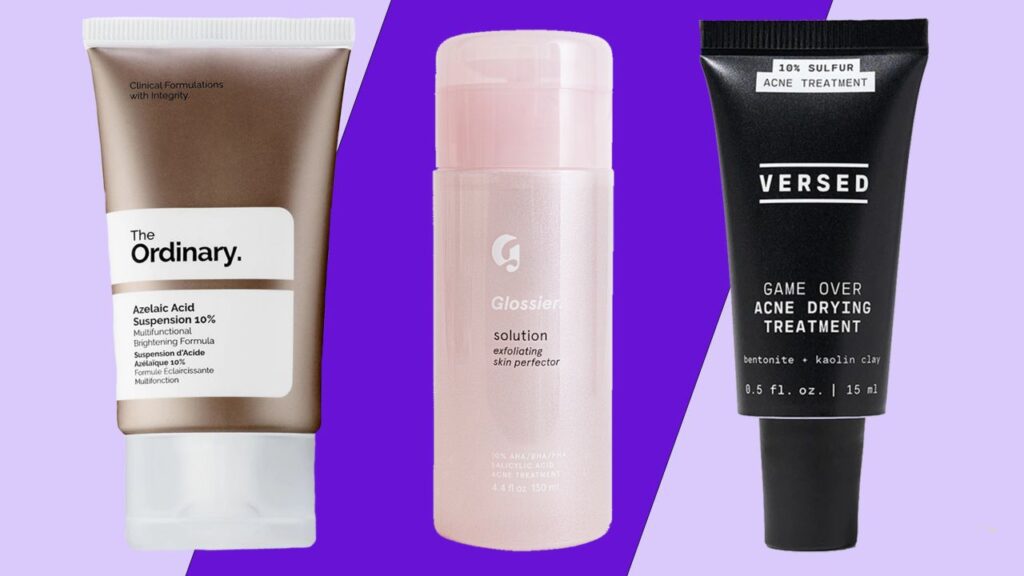
Natural Remedies for Acne
Tea tree oil
Tea tree oil is a natural essential oil known for its antimicrobial properties. It can help kill acne-causing bacteria, reduce inflammation, and unclog pores. When using tea tree oil, it is important to dilute it with a carrier oil, such as jojoba oil or coconut oil, as it can be harsh on the skin when used pure.
Apply diluted tea tree oil to acne-prone areas using a cotton pad or swab. Start with a low concentration, such as a 5% dilution, and gradually increase if well-tolerated. It is important to patch test the diluted tea tree oil on a small area of skin before applying it to the entire face, as some individuals may be more sensitive to its effects.
Aloe vera
Aloe vera gel is well-known for its soothing and healing properties. It has anti-inflammatory effects and can help reduce redness and inflammation associated with acne. Apply a thin layer of pure aloe vera gel to acne-prone areas and leave it on for 15-20 minutes before rinsing off. Aloe vera can be used in combination with other acne treatments to enhance their effectiveness.
Honey and cinnamon masks
Honey and cinnamon have been used for centuries for their natural antibacterial properties. When combined, they can create a potent mask that helps fight acne-causing bacteria and reduce inflammation. Mix equal parts honey and cinnamon powder to form a paste, then apply it to cleansed skin. Leave the mask on for 10-15 minutes before rinsing off with warm water. This mask can be used once or twice a week as part of your skincare routine.
Managing Acne Scarring
Topical scar treatments
Topical scar treatments can help reduce the appearance of acne scars over time. These treatments usually contain ingredients like retinol, vitamin C, or niacinamide, which promote collagen production, improve skin texture, and fade discoloration. Consistent use of these products can help diminish the appearance of acne scars gradually.
It is important to note that topical scar treatments may take several weeks or months to show visible results. It is crucial to be patient and consistent with your skincare routine to see optimal improvements in your acne scars.
Microneedling
Microneedling, also known as collagen induction therapy, is a minimally invasive procedure that involves using a device with tiny needles to create controlled micro-injuries in the skin. This triggers the body’s natural healing response and stimulates collagen production. Microneedling can help improve the appearance of acne scars by filling in depressions and promoting smoother skin texture.
Microneedling is typically performed by a dermatologist or skincare professional. Multiple sessions may be required to achieve optimal results, and downtime may be necessary for the skin to heal and regenerate.
Laser resurfacing
Laser resurfacing is a more advanced professional treatment option for acne scars. It involves using laser technology to remove the top layers of the skin, promoting collagen production and revealing smoother, more even-toned skin. Laser resurfacing can be effective for treating various types of acne scars, including rolling scars, boxcar scars, and icepick scars.
Laser resurfacing treatments are typically performed by a dermatologist or cosmetic surgeon. The number of sessions required and the specific type of laser used will depend on the severity and type of acne scars being treated. Downtime and recovery may be necessary following laser resurfacing.
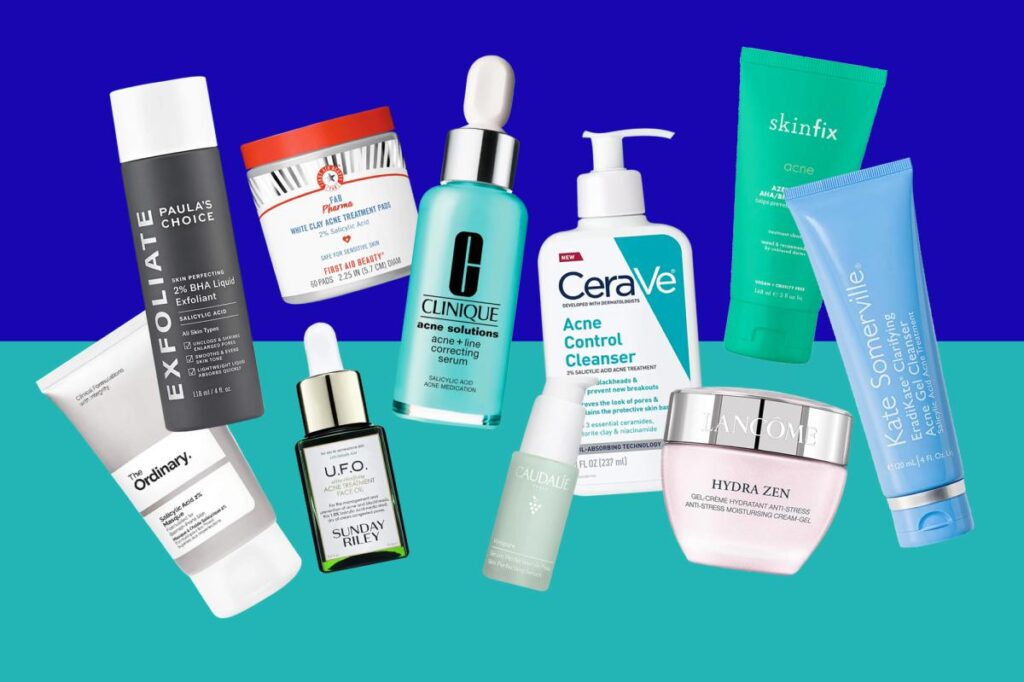
Preventing Acne Breakouts During Menstruation
Understanding hormonal changes
Acne breakouts during menstruation are often linked to hormonal fluctuations. As the menstrual cycle progresses, hormone levels, particularly estrogen and progesterone, fluctuate, which can lead to increased oil production and clogged pores. It is important to understand these hormonal changes to effectively manage acne during this time.
Adopting proper skincare and dietary habits
Maintaining a consistent skincare routine designed for acne-prone skin is crucial during menstruation. Focus on gentle cleansing, exfoliating, and moisturizing to keep the skin clean and hydrated. Avoid abrasive scrubbing or using harsh products that can irritate the skin and potentially worsen acne.
Dietary habits can also play a role in managing acne during menstruation. Aim for a balanced diet rich in fruits, vegetables, whole grains, and lean proteins. Avoid high-glycemic foods, excessive dairy consumption, and sugary snacks, as they can contribute to hormonal imbalances and acne flare-ups.
Using menstrual products wisely
Choosing the right menstrual products can help prevent acne breakouts. Opt for fragrance-free, non-comedogenic pads or tampons to avoid skin irritation and minimize the risk of clogged pores. Change your menstrual products frequently to prevent prolonged contact with sweat and bacteria, which can contribute to acne formation. Additionally, avoid using scented products that can disrupt the pH balance of the vagina and potentially trigger hormonal imbalances.
Conclusion
Finding the right acne solution requires understanding the causes and triggers of acne, adopting proper skincare and dietary habits, and seeking professional advice when needed. Consistency and patience are key in preventing and treating acne, as results may not be immediate. Consulting a skincare professional, such as a dermatologist or aesthetician, can provide personalized recommendations based on your specific skin concerns. Remember, everyone’s skin is unique, and what works for one person may not work for another. With the right approach and a little bit of patience, you can achieve healthier, clearer skin.
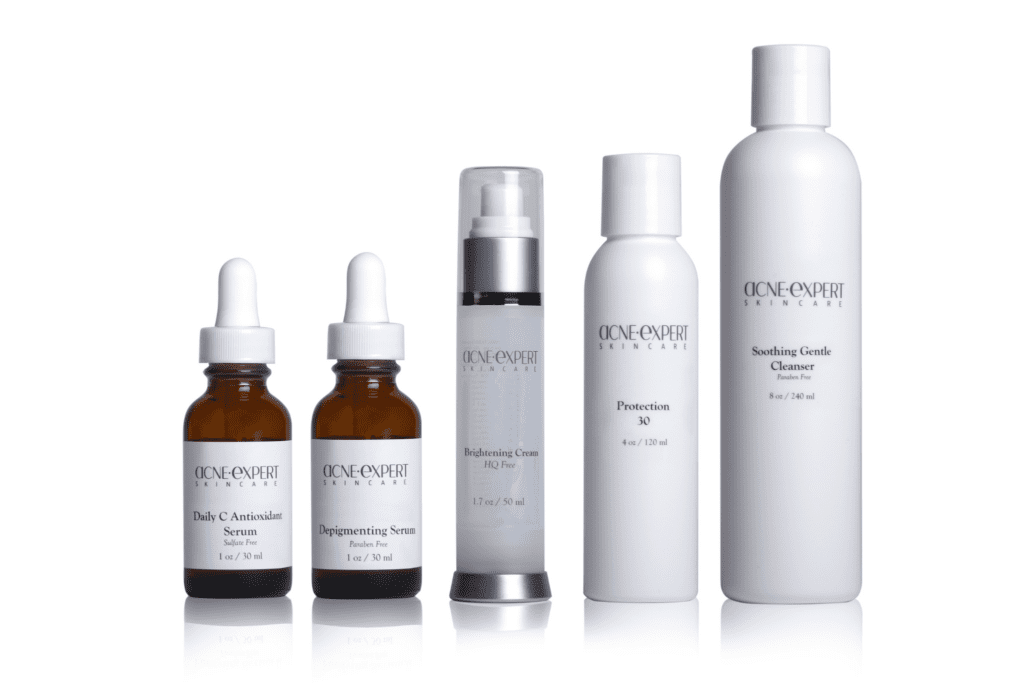
Embrace The Glow: Nourishing Regimens For Dry Skin Curated By Stylish.ae(Opens in a new browser tab)
CeraVe Salicylic Acid Acne Treatment Review(Opens in a new browser tab)
Minimalist Niacinamide 5% Face Serum Review(Opens in a new browser tab)

